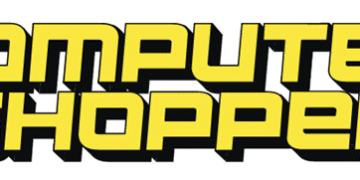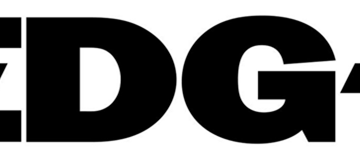2025-06-13 04:00:00
www.zdnet.com

With so much news at 2025’s Apple’s Worldwide Developers Conference, you might be excused for missing that Apple quietly revealed it was releasing and open-sourcing a new open-source containerization framework and a shell tool called Container. Both are designed to create and run Linux containers as lightweight virtual machines (VMs) directly on MacOS.
Also: Why Denmark is dumping Microsoft Office and Windows for LibreOffice and Linux
This framework is optimized for Apple Silicon and will be natively integrated into the forthcoming MacOS 26 (Tahoe). You can, of course, already run Linux in containers with such third-party container tools as Docker, Podman, and Orbstack. You can also easily run Linux on your older Intel-powered Mac or, with more effort, run Asahi Linux on M-powered Macs.
Apple Container is written in Swift and licensed under Apache 2. Apple claims these “Containers achieve sub-second start times using an optimized Linux kernel configuration and a minimal root filesystem with a lightweight init system.” You’ll need a minimum of any Mac with Apple Silicon inside, MacOS 15, and Xcode 26 beta. These containers are compliant with the Open Container Initiative.
Also: Want to save your old computer? Try one of these 8 Linux distros for free
The framework uses a custom init system called vminitd, also written in Swift, to manage process launching, filesystem mounting, and host-container communication.
Unlike other container approaches, which run multiple containers in a single, often resource-heavy Linux VM, Apple’s container framework spins up a separate lightweight VM for each container. These VMs are based on Kata Containers, a well-known and well-regarded OpenInfra Foundation project.
Each container gets its own isolated Linux kernel environment, enhancing security and privacy. The minimal root filesystem excludes most core utilities and dynamic libraries, reducing the attack surface and maintenance overhead.
Every container can also be assigned a dedicated IP address, removing the need for port forwarding and improving network isolation. However, if you try running Container in the current MacOS 15, Sequoia, you can only create the container network with the first container that starts.
Also: How Red Hat just quietly, radically transformed enterprise server Linux
Since the network XPC, Apple’s basic interprocess communication helper, provides IP addresses to containers, and the helper has to start before the first container, the network helper and vmnet can disagree on the subnet address, resulting in containers that are completely cut off from the network. In short, this is bad news.
However, this issue will be fixed by the time Tahoe, which is currently in developer beta, ships. For now, though, if you’re trying to run the containers in MacOS 15, you can expect some problems.
You may be asking yourself, “Why is Apple taking this approach?” Well, the strategy will help developers working on Linux projects, so there must be a demand for it.
Also: Java at 30: How a language designed for a failed gadget became a global powerhouse
Apple’s move tacitly acknowledges the central role of Linux containers in modern software development by providing a seamless, high-performance, and secure experience for Mac-using Linux developers. Which, come to think of it, is much like what Microsoft did for Windows-based Linux developers with its Windows Subsystem for Linux.
By offering native, open-source tools, Apple is positioning MacOS as a first-class platform for container-based development, optimized for its own hardware and developer ecosystem.

Keep your entertainment at your fingertips with the Amazon Fire TV Stick 4K! Enjoy streaming in 4K Ultra HD with access to top services like Netflix, Prime Video, Disney+, and more. With an easy-to-use interface and voice remote, it’s the ultimate streaming device, now at only $21.99 — that’s 56% off!
With a 4.7/5-star rating from 43,582 reviews and 10K+ bought in the past month, it’s a top choice for home entertainment! Buy Now for $21.99 on Amazon!
Help Power Techcratic’s Future – Scan To Support
If Techcratic’s content and insights have helped you, consider giving back by supporting the platform with crypto. Every contribution makes a difference, whether it’s for high-quality content, server maintenance, or future updates. Techcratic is constantly evolving, and your support helps drive that progress.
As a solo operator who wears all the hats, creating content, managing the tech, and running the site, your support allows me to stay focused on delivering valuable resources. Your support keeps everything running smoothly and enables me to continue creating the content you love. I’m deeply grateful for your support, it truly means the world to me! Thank you!
|
BITCOIN
bc1qlszw7elx2qahjwvaryh0tkgg8y68enw30gpvge Scan the QR code with your crypto wallet app |
|
DOGECOIN
D64GwvvYQxFXYyan3oQCrmWfidf6T3JpBA Scan the QR code with your crypto wallet app |
|
ETHEREUM
0xe9BC980DF3d985730dA827996B43E4A62CCBAA7a Scan the QR code with your crypto wallet app |
Please read the Privacy and Security Disclaimer on how Techcratic handles your support.
Disclaimer: As an Amazon Associate, Techcratic may earn from qualifying purchases.



































![Legend of Zelda: Ocarina of Time Walkthrough Part 4 [3/3]](https://techcratic.com/wp-content/uploads/2025/08/1755588431_maxresdefault-360x180.jpg)
















































![[DEBUT COVER] Intergalactic Bound – Yunosuke / CircusP [MIKU EXPO 10th]](https://techcratic.com/wp-content/uploads/2025/08/1755598927_maxresdefault-360x180.jpg)


















